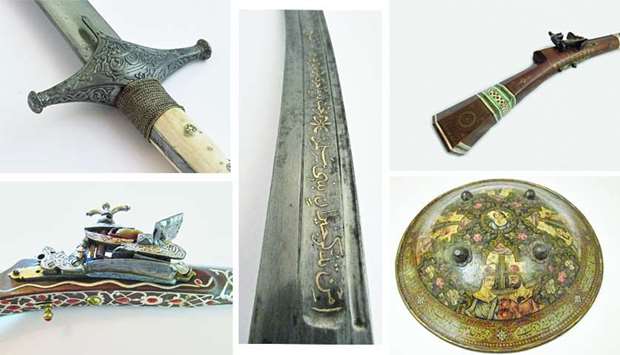Qatari collector Fadel al-Mansoori will display his impressive Islamic arms and armour collection at the Museum of Islamic Art (MIA) at the opening of his exhibition this month and on view until May 2018.
Held under the leadership of Qatar Museums’ (QM) chairperson HE Sheikha Al Mayassa bint Hamad bin Khalifa al-Thani, the ‘Powder and Damask: Islamic Arms and Armour from the Collection of Fadel al-Mansoori', presents edged weapons and firearms crafted primarily in Turkey, Iran and India from the 17th to the mid-19th century.
The exhibition was curated by MIA curatorial team, Dr Mounia Chekhab Abudaya and Julia Tugwell.
Powder and Damask explores the art of craftsmanship, which reached unprecedented levels in these regions under the Ottoman, Safavid and Mughal empires, where weapons were valued not only for their intended purpose but as works of art as well.
The objects featured as part of the collection are excellent examples of the diverse styles and materials, such as ivory, horn, gold inlay and calligraphy, used to decorate weapons during this time period.
“Powder and Damask is impressive in many ways, from the careful preservation of these magnificent pieces to the highly sought after nature of the artefacts,” Dr Mounia Chekhab Abudaya, co-curator of the exhibition at MIA said. ”We are honoured to be able to give this collection a chance to reach and inspire ever wider audiences.”
“As there are currently no permanent arms and armour displays in Qatar, this exhibition is also an excellent opportunity for people of all ages to learn about the important contribution of the Islamic world in the evolution and advancement of arms and armour,” he added.
One of the collection’s highlights is its access to objects made from Damascus steel, which has long been highly prized as an important differentiator of quality that is generally seen in weapons made for high-ranking members of society and denotes status.
The technique was practiced by master craftsmen and metal smiths, whose knowledge has been lost to history.
Another important aspect of al-Mansoori’s collection is his interest in conservation, encouraging other private collectors to educate themselves on the importance of proper care for the long-term preservation of historic artefacts.
The collection will be displayed in two main sections, with one gallery highlighting the production of edged weapons, while the other one provides an insight into the production of firearms in the Islamic world.
Across both sections, the interconnection between distant cultures is evident through the similar style and taste of decoration used across Turkey, India and Iran around the same time period.
A range of educational programmes, workshops, activities and events will be organised alongside the exhibition.

